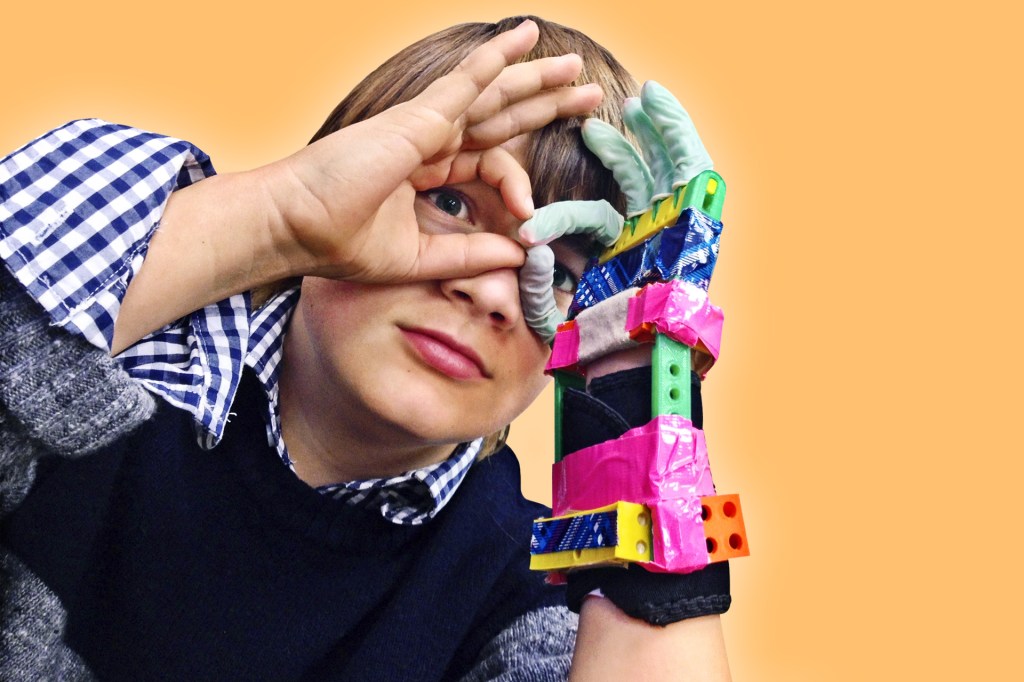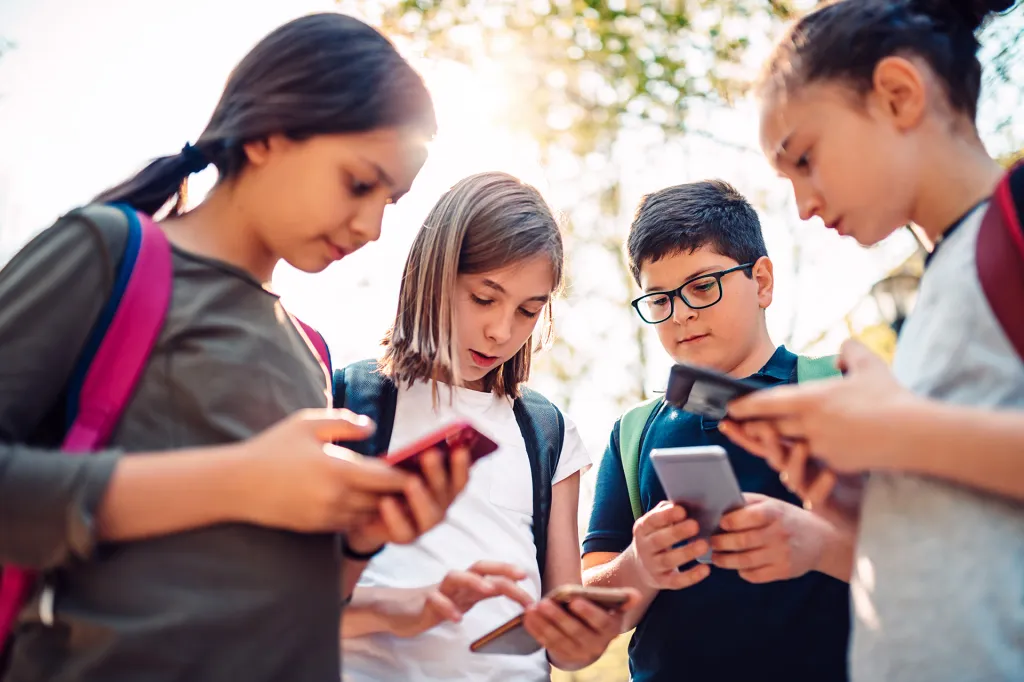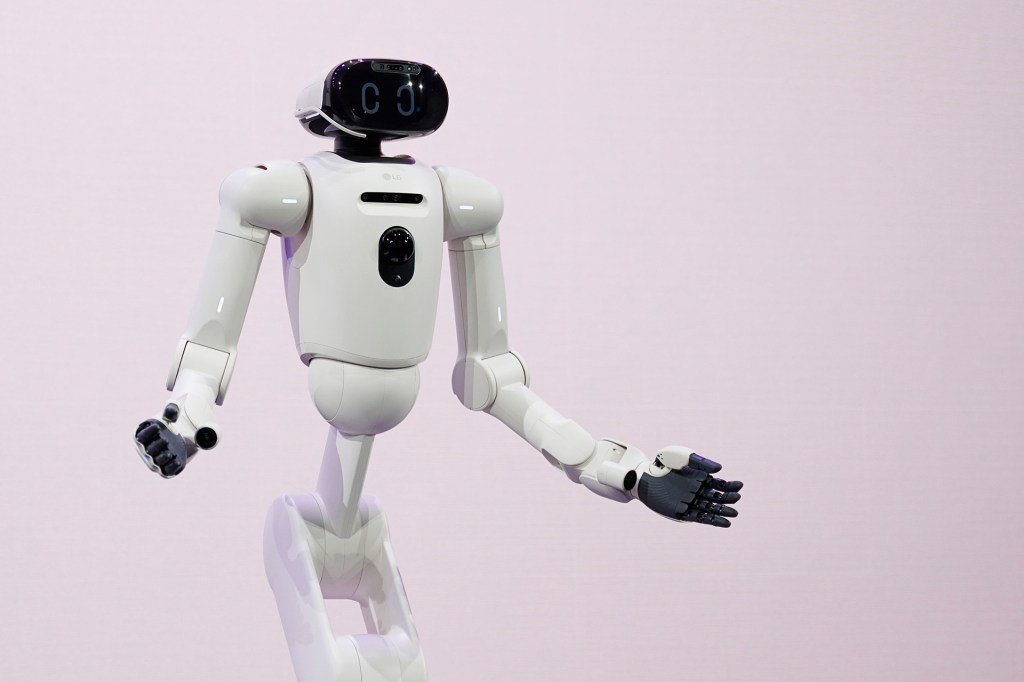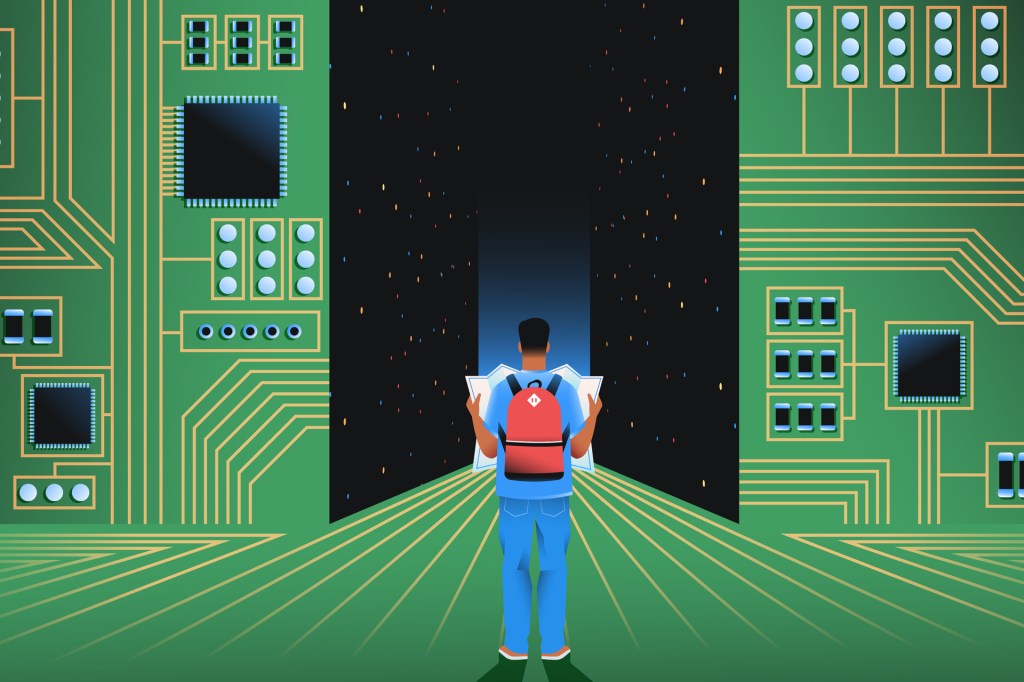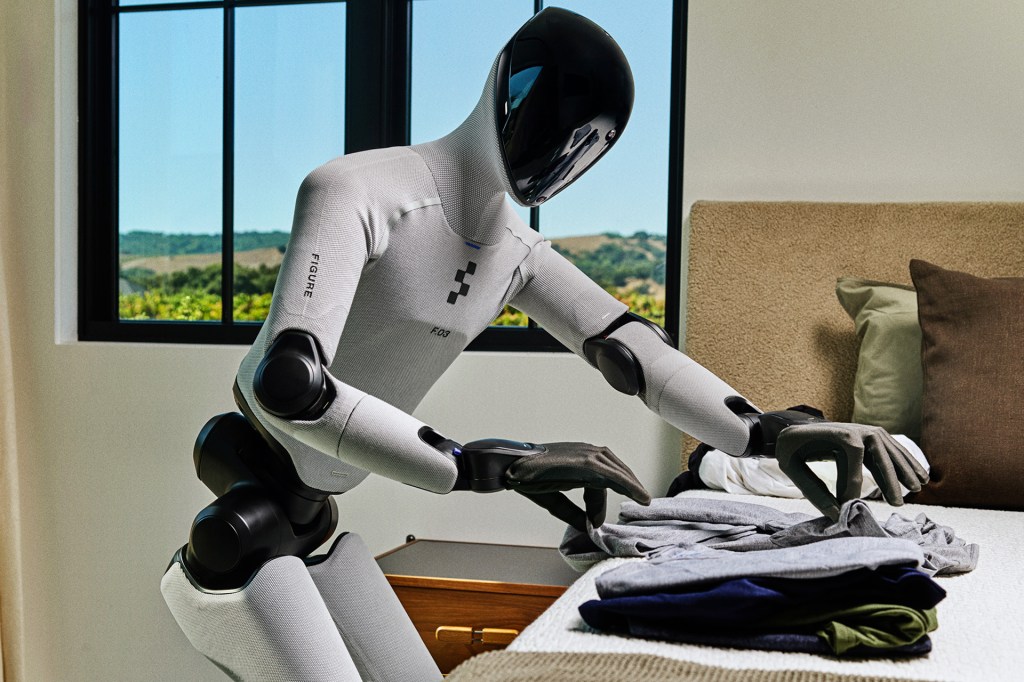Bodybuilding
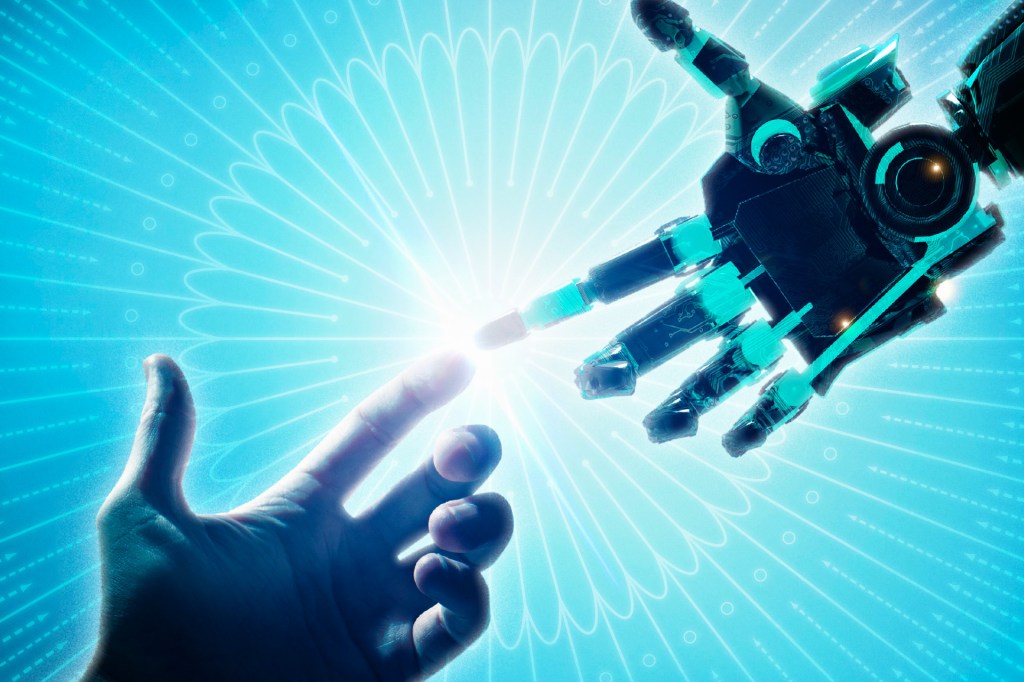
In 2013, at 27, farmer Jake Hubbard of Chana, Illinois, lost his left hand in an accident. Recently, a group of eighth graders at nearby Rochelle Middle School came to his aid. As part of a STEM project, they helped create a prosthetic
prosthetic
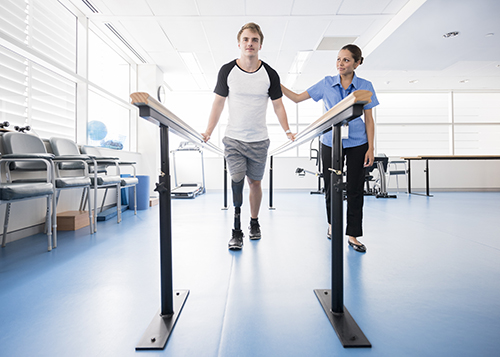 JOHNNY GREIG—GETTY IMAGES
an artificial body part
(noun)
After losing a leg, David learned to walk wearing a prosthetic.
hand for him (see “STEM School”). They built it using a 3D printer. In May, they presented the new appendage to Hubbard.
JOHNNY GREIG—GETTY IMAGES
an artificial body part
(noun)
After losing a leg, David learned to walk wearing a prosthetic.
hand for him (see “STEM School”). They built it using a 3D printer. In May, they presented the new appendage to Hubbard.
Hubbard already had a clawlike prosthetic, which cost $10,000. He still wears it every day for work. It is durable
durable
 LESTER LEFKOWITZ—GETTY IMAGES
able to last a long time
(adjective)
Steel is a durable building material.
and enables
enable
LESTER LEFKOWITZ—GETTY IMAGES
able to last a long time
(adjective)
Steel is a durable building material.
and enables
enable
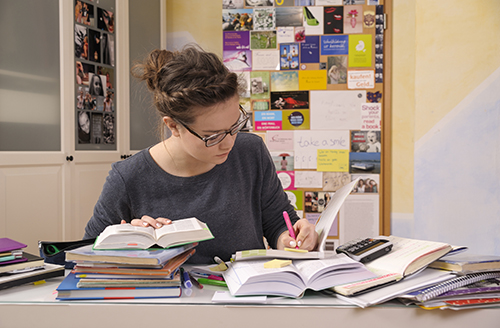 GETTY IMAGES
to make able; to make possible, practical, or easy
(verb)
Glasses enable people to read.
him to grasp objects. “I couldn’t keep working without it,” Hubbard told TFK. But he adds that it has become “dirty, beat-up, and not nice” to look at.
GETTY IMAGES
to make able; to make possible, practical, or easy
(verb)
Glasses enable people to read.
him to grasp objects. “I couldn’t keep working without it,” Hubbard told TFK. But he adds that it has become “dirty, beat-up, and not nice” to look at.
The new prosthetic looks more like a human hand. It cost about $100 to produce. Now, Hubbard says, when he and his family go out, “I have something nice to have on.”
But the new hand has very limited gripping ability. During the 2017–2018 school year, Hubbard will work with Rochelle students to improve it.
Neither prosthetic can truly replace the hand Hubbard lost. When he wears a prosthetic, he cannot feel the objects he touches. But that may change. Scientists are working on a prosthetic that would enable wearers to feel again.
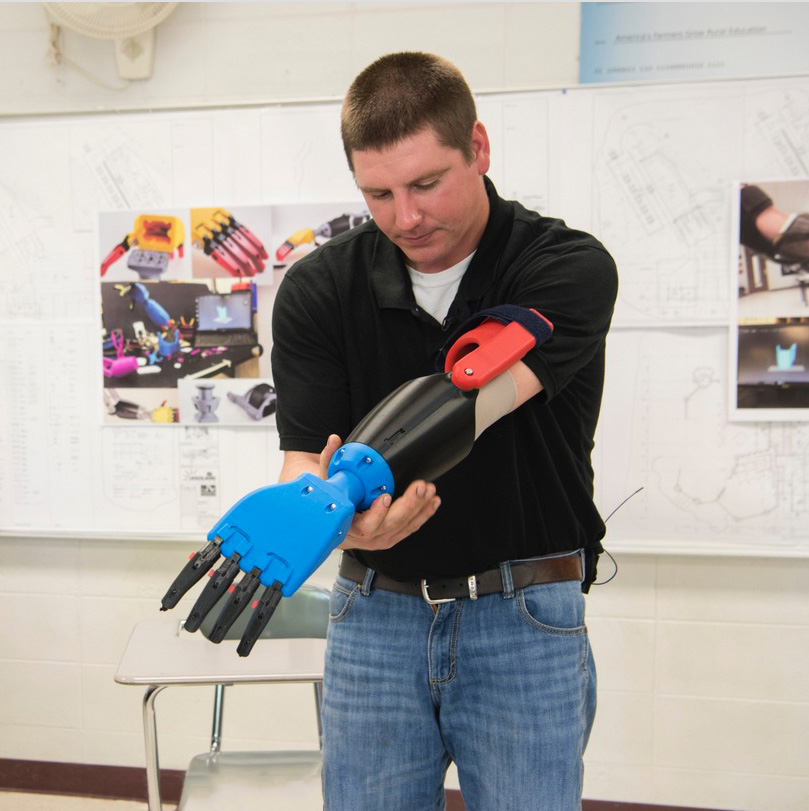
A Sense of Touch
“Normally, a prosthetic, no matter how well made, is a fancy tool,” Dustin Tyler says. He is a professor at Case Western Reserve University, in Cleveland, Ohio. Tyler leads a team of researchers. Their goal is to build a prosthetic that makes the user forget it’s not a real hand. They’ve developed one that has electrodes that are placed on the user’s arm. The electrodes send signals to the brain. “That connects the prosthetic to the brain,” Tyler says.
Sensors measure the pressure of a prosthetic hand or finger on an object. “The user senses the force that he or she is pressing with,” Tyler explains.
Sights and Sounds
Scientists are developing other technologies that connect to humans. The Orion I Visual Cortical Prosthesis is intended to restore vision to people who have become completely blind. It is being tested now. The system includes a receiver with electrodes that are placed on the user’s brain. It also has a camera built into a pair of eyeglasses. The camera sends images to a small wearable computer. The images are turned into electrical signals. They are sent wirelessly to the receiver. The user can see the images.
Other technology helps children who can’t hear. The auditory
auditory
 GETTY IMAGES
of or relating to the sense of hearing
(adjective)
Listening to music is an auditory experience.
brainstem implant has a transmitter that attaches to the user’s head and a microphone. A receiver is implanted on the user’s brainstem. The microphone and transmitter turn sounds into electrical signals that are sent to the receiver. The implant does not restore normal hearing. But it can improve the user’s ability to detect different sounds and tell them apart.
GETTY IMAGES
of or relating to the sense of hearing
(adjective)
Listening to music is an auditory experience.
brainstem implant has a transmitter that attaches to the user’s head and a microphone. A receiver is implanted on the user’s brainstem. The microphone and transmitter turn sounds into electrical signals that are sent to the receiver. The implant does not restore normal hearing. But it can improve the user’s ability to detect different sounds and tell them apart.
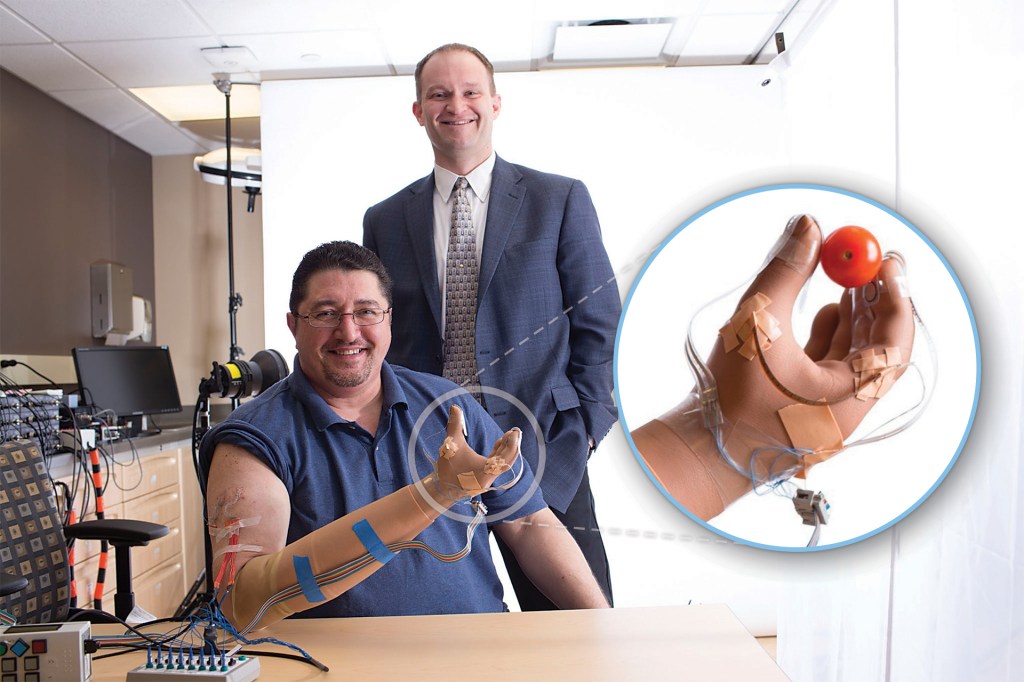
TECH TEST Scientist Dustin Tyler, right, poses with Igor Spetic, who is testing a prosthetic hand that can feel.
RUSSELL LEEGetting a Grip
Hubbard says that having a device like the one being built at Case Western “would be the greatest thing in the world.” But for now, he is eager to update his student-made device. Rochelle students will soon start work on the upgrade.
“We’re going to improve it by leaps and bounds,” Hubbard says.
STEM School
Rochelle Middle School’s STEM project began with Vic Worthington, the school’s technology teacher. He and Jake Hubbard attend the same church. Hubbard told him he preferred not to wear his clawlike prosthetic in public. He felt that it looked too dirty and unpleasant. But Hubbard did not have a spare. That gave Worthington an idea.
“I realized that the school had a 3D printer that we don’t use nearly enough,” Worthington told TFK. “I had heard about people 3D-printing these things, and I suggested we try to do it with our students.”
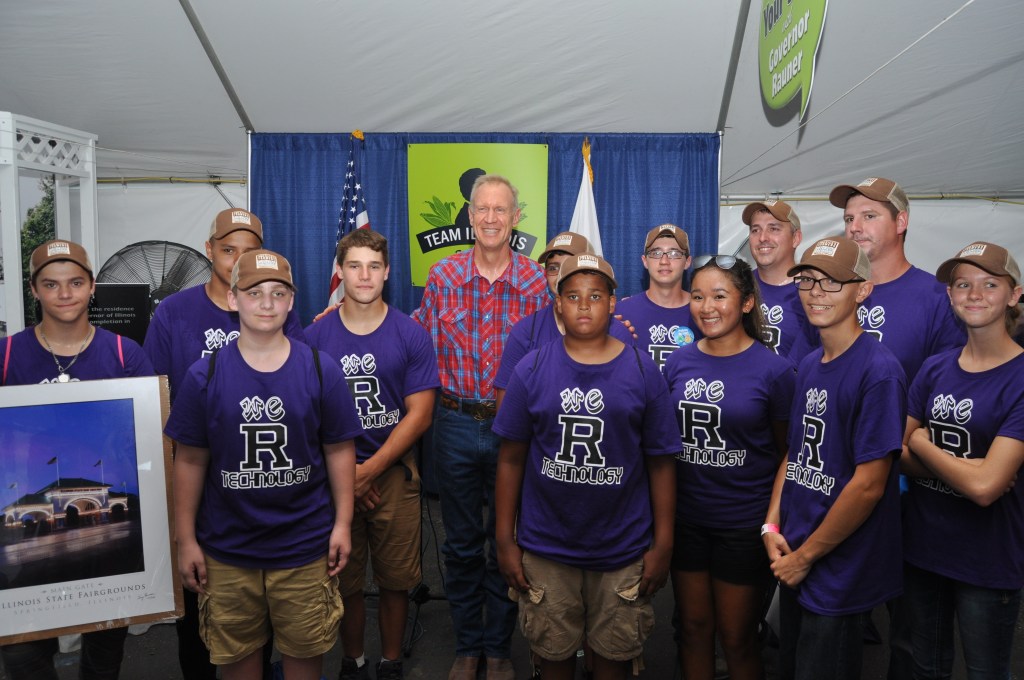
EXTRA CREDIT Students from Rochelle’s prosthetic-hand project are honored by Illinois governor Bruce Rauner on August 15.
COURTESY ILLINOIS STATE FAIRWorthington’s eighth-grade homeroom class loved the idea. An engineer in Ohio contributed the design for the hand. The students used the 3D printer to print out the parts. Then they assembled them. They built several prototypes
prototype
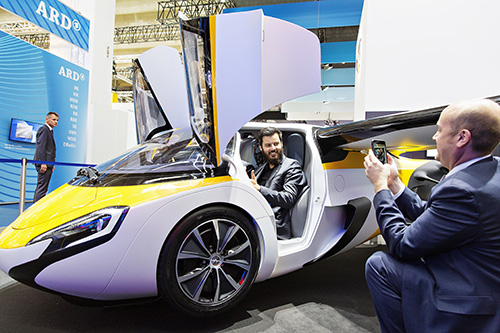 PETR MLCH—CTK/AP
a first, or preliminary, model of something
(noun)
Inventors tested a prototype of the car.
.
PETR MLCH—CTK/AP
a first, or preliminary, model of something
(noun)
Inventors tested a prototype of the car.
.
It took the whole school year to complete the project. Megan Thiravong, 14, was one of the students who worked on it. “It was a great experience,” she says. “When I saw Mr. Hubbard wear the hand for the first time, I could barely sit still. It was like static electricity was going through me.”
CORRECTION: A previous version of this story misstated the hand Jake Hubbard lost in a farming accident. It was his left hand.
Assessment: Click here for a printable quiz. Teacher subscribers can find the answer key in this week's Teacher's Guide.





